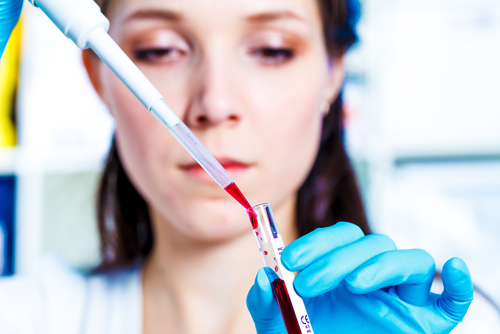Canadian researches have created "clever cloth" that can monitor and transmit biomedical information including the level of blood glucose and brain activity, via wireless communications.

Canadian researches have created "clever cloth" that can monitor and transmit biomedical information including the level of blood glucose and brain activity, via wireless communications.

This perennial plant has got a lot of names — ramson,

Nowadays, sports bracelets and fitness trackers are among the most interesting gadgets. Bracelets of different colors and surface finish are «clever» accessories helping human trace his/her own activity.

The most informative and interesting sort of tourism is hiking. Hiking is a hobby that has no age or social limitations. Hiking was known to be healthful long ago. Even

This diet is the classic protein diet, but it differs from the meat one in that cheese proteins digest faster. The only shortcoming of the cheese diet is the high level of fats. Therefore, the amount of carbohydrates consumed should be minimized. However, the shortcoming mentioned is also the main merit of the cheese diet — fats decelerate digestion and strongly depress appetite.
 For a long time scientists have been dreaming of «correcting» genome, remove harmful mutations from it and prevent development of hereditary diseases. However, that became possible just a few years ago. There are three new technologies of genome editing. The earliest of them is the technology of zinc finger nucleases; the idea of this technology appeared as far back as 1980s.
For a long time scientists have been dreaming of «correcting» genome, remove harmful mutations from it and prevent development of hereditary diseases. However, that became possible just a few years ago. There are three new technologies of genome editing. The earliest of them is the technology of zinc finger nucleases; the idea of this technology appeared as far back as 1980s.
A while ago, research workers from the biotechnological company «Editas Medicine» announced at the scientific conference in Cambridge that they would be able to make pointwise changes in human genome by 2017.  Their creation was named «Clustered Regularly Interspaced Short Palindromic Repeats» (CRISPR). The experts predict that technology developed will help people get rid of many congenital diseases, e.g. congenital Leber amaurosis. That will be real breakthrough in medicine. Moreover, the scientists promise that their creation will be simple and cheap, so it will be open to specialists from all over the world.
Their creation was named «Clustered Regularly Interspaced Short Palindromic Repeats» (CRISPR). The experts predict that technology developed will help people get rid of many congenital diseases, e.g. congenital Leber amaurosis. That will be real breakthrough in medicine. Moreover, the scientists promise that their creation will be simple and cheap, so it will be open to specialists from all over the world.
Several technologies which allow to make directed changes in DNA nucleotide sequence of mammals were developed last years. At present, those new technologies are testing in mice:
 By the use of the method of TALEN nucleases, scientists make a break in the coding region of a gene and then they heal that break. In the experiments on mice, that technology was applied and mutation, that cause the development of one of the hereditary syndromes, was introduced into mouse genome. Then the authors of the experiment removed that mutation in the same way. Thus, they showed that TALEN allows changing genome efficiently.
By the use of the method of TALEN nucleases, scientists make a break in the coding region of a gene and then they heal that break. In the experiments on mice, that technology was applied and mutation, that cause the development of one of the hereditary syndromes, was introduced into mouse genome. Then the authors of the experiment removed that mutation in the same way. Thus, they showed that TALEN allows changing genome efficiently.
The method of zinc finger nucleases is not so effective as the methods mentioned above.
Methods of genome editing assure accurate delivery of therapeutic genes that allow retarding the processes of aging: telomerase reverse transcriptase (TERT), gene of the transcription factor FOXO3, and gene coding inhibitor of

Technologies described are not investigated and debugged enough. At the moment, careful modelling of those methods on mice is necessary. CRISPR and TALEN technologies are promising for the cure of serious illnesses of human.
 In 1959, it was established for the first time, that if we remove epiphysis in young rats, their life span shortens substantially compared to the control group. Data obtained were confirmed by other scientists. Later, it was shown that peptide extract of epiphysis named epytalaminum restore regular estrous cycles and sensitivity of hypothalamic sexual centers to oestrogens in mice — the mechanism that is believed to play a key role in
In 1959, it was established for the first time, that if we remove epiphysis in young rats, their life span shortens substantially compared to the control group. Data obtained were confirmed by other scientists. Later, it was shown that peptide extract of epiphysis named epytalaminum restore regular estrous cycles and sensitivity of hypothalamic sexual centers to oestrogens in mice — the mechanism that is believed to play a key role in
 Natural biological rhythms help an organism adapt to changeable environment. When those biorhythms are upset, the ability of an organism to resist unfavorable external forces decreases.
Natural biological rhythms help an organism adapt to changeable environment. When those biorhythms are upset, the ability of an organism to resist unfavorable external forces decreases.
pineal body is the main pace maker in human organism. That organ produces melatonin that depress free radical processes in an organism, thereby delaying aging.
 More and more information accumulates about the role of the pineal body as the main pace maker of functions of an organism. Light depresses production and secretion of melatonin, so the highest level of melatonin in the pineal body and blood is observed at night, while the lowest level — in the morning and in the daytime. When an organism ages, epiphysial function decline, so disorders of the rhythm of melatonin secretion appear and the level of melatonin secretion decreases.
More and more information accumulates about the role of the pineal body as the main pace maker of functions of an organism. Light depresses production and secretion of melatonin, so the highest level of melatonin in the pineal body and blood is observed at night, while the lowest level — in the morning and in the daytime. When an organism ages, epiphysial function decline, so disorders of the rhythm of melatonin secretion appear and the level of melatonin secretion decreases.
Mechanisms of geroprotector effect of melatonin and epytalaminum are not fully known. The ability of those substances to depress free radical processes in an organism could be important. Melatonin, as well as epitalaminum stimulate cells of the immune system and slow aging of the immune system down; they also normalize a number of
 Additions and Criticism:
Additions and Criticism:In experiments on mice, scientists found out that geroprotector effect of melatonin was not the same in all the cases and sometimes there was no effect at all. Moreover, it was established that melatonin given to experimental animals for a long period could increase the rate of neoplasms development.